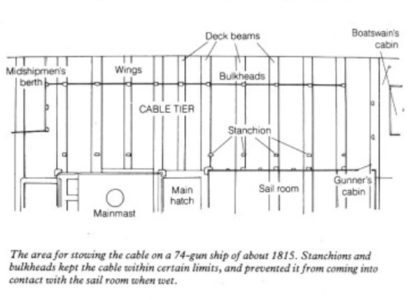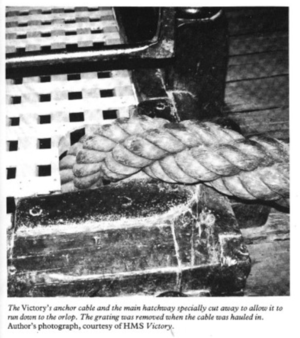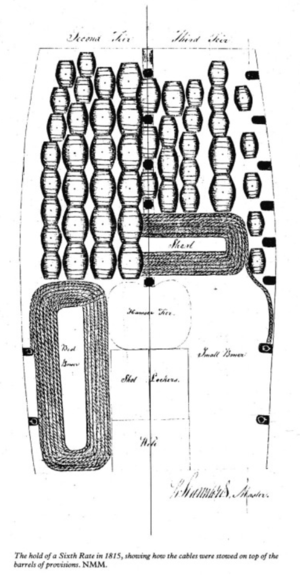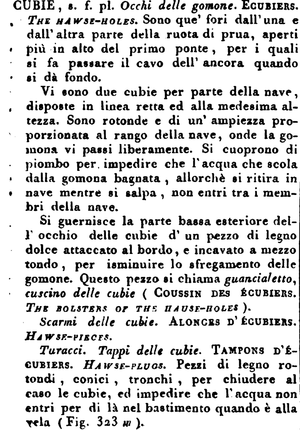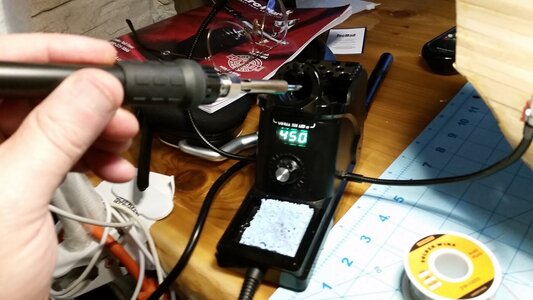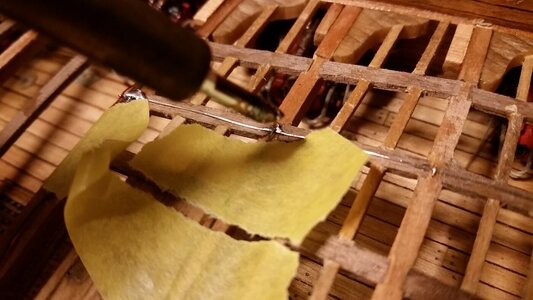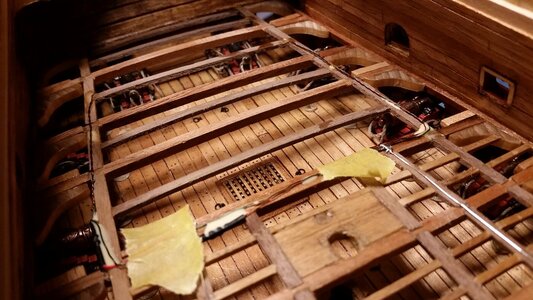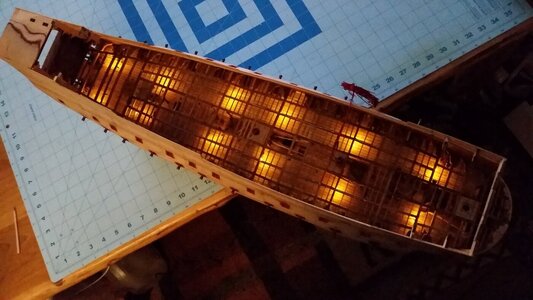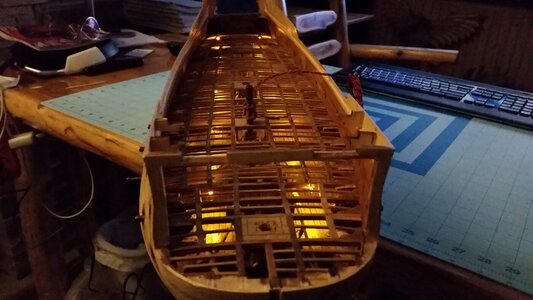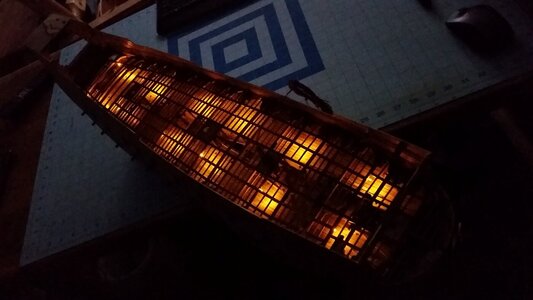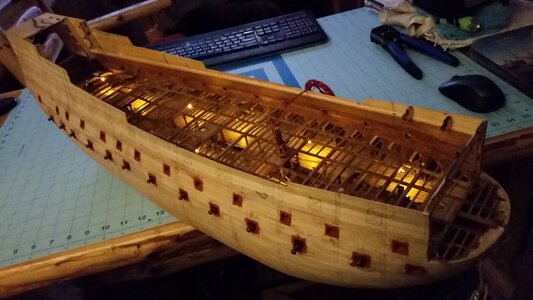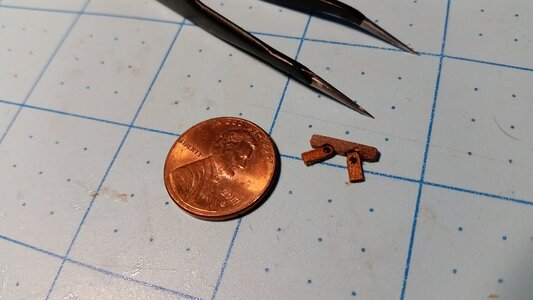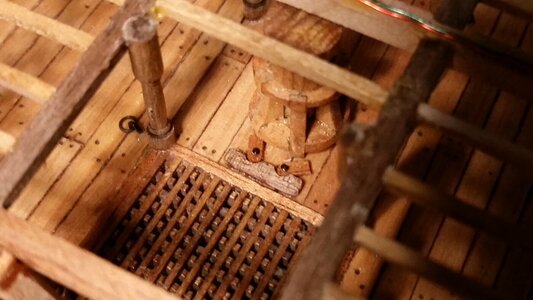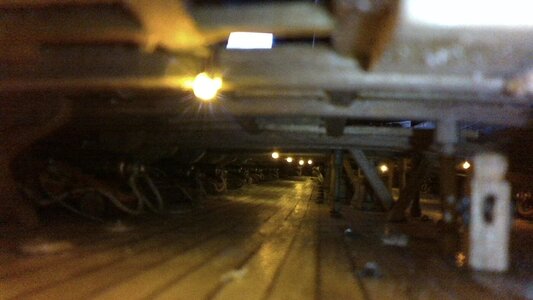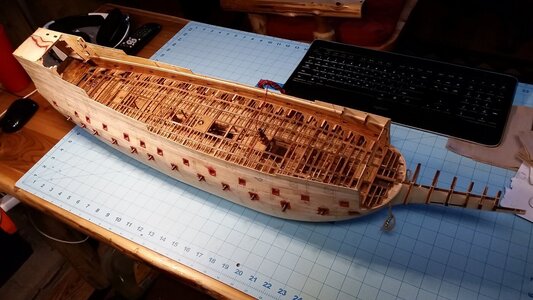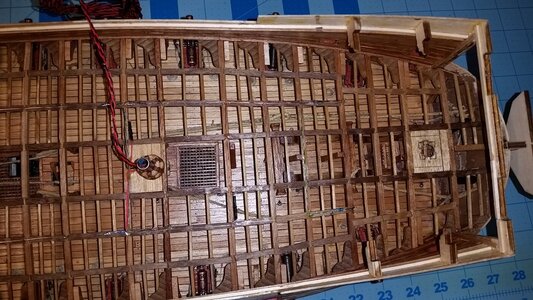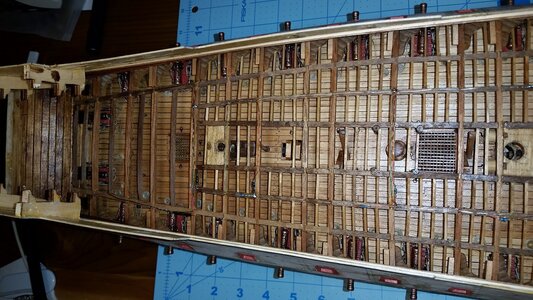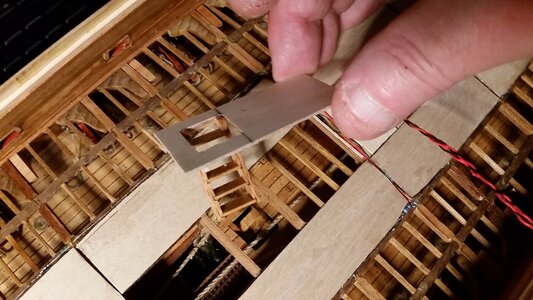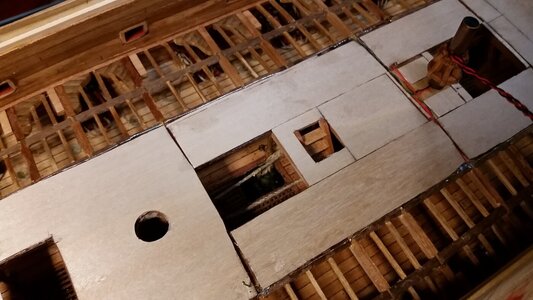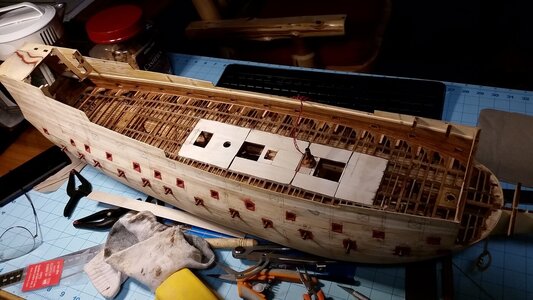Lighting circuitry was started today. LED's are being installed to simulate lanterns hanging from the deck beams. Two lengths of 24 gage wire were stripped of insulation and laid down on top of the carlings. Small pieces of wire were bent to form staples, which were glued into holes that were drilled in the beams to hold the wires in the center of the carlings. The wires from the capstan shaft for lighting this deck were soldered to the two wires, the starboard wire connected to positive, and the port wire connected to negative. The two wires now formed a 3 volt electrical bus, and LED's are going to be connected between them. Each yellow nano LED has a resistor in its positive lead to reduce the current to a level that is safe for the LED to operate for about 11 years. Four of the LED's have been connected so far. The LED's and their wiring were soldered to the wires acting as bus-bars, and glued to the beams with PVA glue. Low temperature solder was used, so wood is not scorched while soldering.
Bending and cutting staples
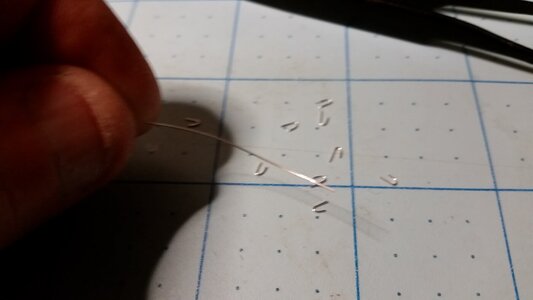
Staples are glued in drilled holes in the beams to hold the wire bus-bars.
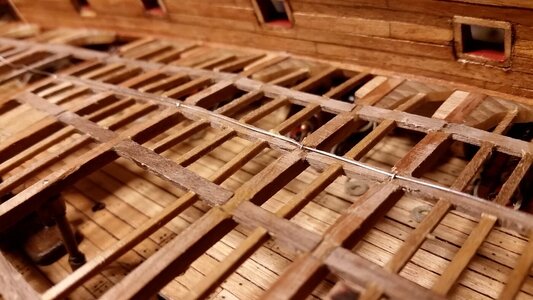
Two bus-bars installed, port is negative and starboard is positive.
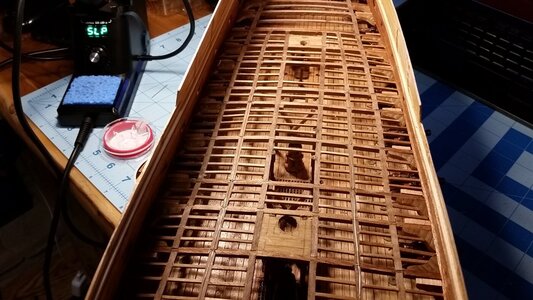
The leads of the LED's are routed over the beam, and LED resistors are positioned atop carlings or alongside beams.
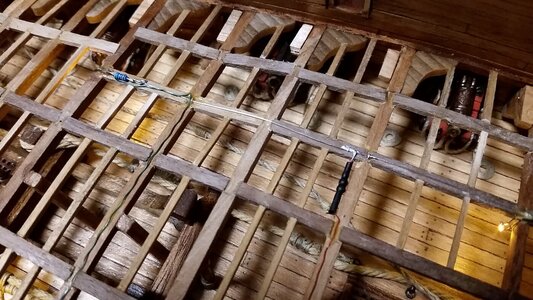
A test of the circuit is made, and surprisingly, it works! The first four LEDs illuminate the deck below.
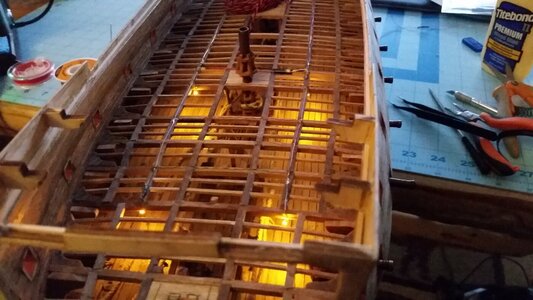
Bending and cutting staples

Staples are glued in drilled holes in the beams to hold the wire bus-bars.

Two bus-bars installed, port is negative and starboard is positive.

The leads of the LED's are routed over the beam, and LED resistors are positioned atop carlings or alongside beams.

A test of the circuit is made, and surprisingly, it works! The first four LEDs illuminate the deck below.






